After last weeks discovery of Denny, the Neanderthal/Denisovan hybrid, this week might seems like it's been a little slow in the human evolution news department.
Don't fear, the wheels of discovery continue to turn. Several new discoveries have been made, even if they didn't come with the flashy media attention of Denny.
So here are the top 5 of such discoveries, as voted on by my social media chums. To see the rest, be sure to check me out on twitter.
#1 - Rubbish clothes
Could Neanderthal clothing explain why they went extinct? Evidence from the bones of the prey implies their attire was worse than ours.
Animal bones from stone age camps reveal humans often hunted small animals. These are commonly used by modern communities to give their clothes a lovely fur trim, keeping the wearer toasty. However, such bones are much rarer at Neanderthal sites, suggesting their clothes may have lacked this trim.
I wrote about this in more detail in another blog post, and handily summarised the findings in the image below.
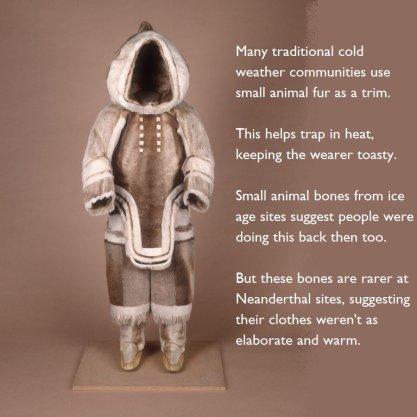
#2 - Dating cave art
Cave art typically can't be directly dated. Radiocarbon dating, for instance, can only date organic matter but the paints used tend not to be organic.
To get around this problem, scientists have come up with some quite ingenious alternatives. Like checking the age of ancient wasps nests growing around the cave art.
This issue came to the fore with the recent discovery of Neanderthal cave art. In this case, scientists dated the carbonate coating of the art. But this has problems, as described in the summary below:
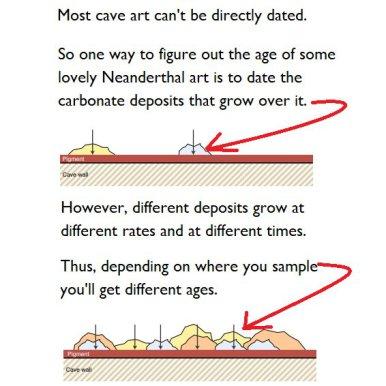
#3 - Babies don't like their veggies
Humans appear to have innate fears of many things, expressed from a young age. One of them seems to be plants, as the summary below elaborates:
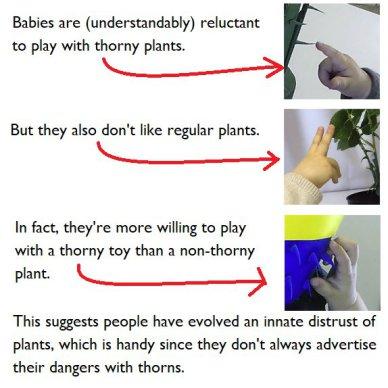
#4 - Chimps like loud noises
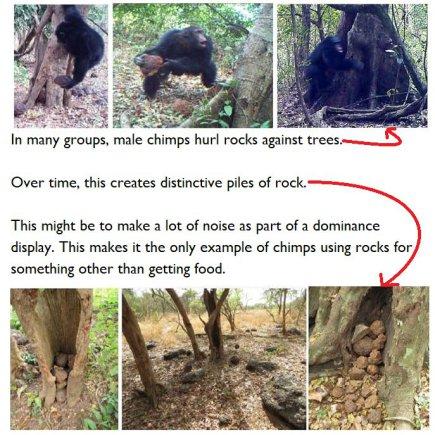
This display is described as "ritual" in the paper announcing its discovery. This has led to some inferring that this might be some sort of primitive religion.
However, ritual is just a term used to describe certain types of chimp activities. Typically repetitive behaviors performed for social reasons. Like a dominance display or mating dance. It doesn't necessarily carry the religious implications we associate with the term.
So as interesting as this study is, it doesn't mean chimps have started worshiping this tree.
#5 - Stone age bling
Ostrich eggshell may be one of the most common artistic materials in our history. First used across Africa in the stone age, some people still use it to make beads and pendants today.
And now it turns out it was even more widespread than we thought, with the discovery of the oldest examples from Mozambique:
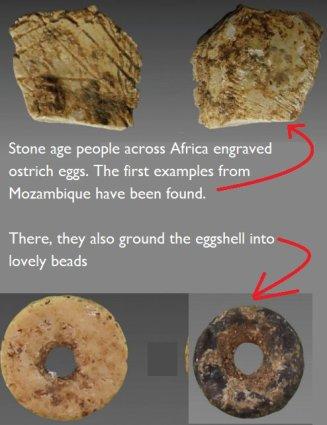
References
- Collard, M., Tarle, L., Sandgathe, D. and Allan, A., 2016. Faunal evidence for a difference in clothing use between Neanderthals and early modern humans in Europe. Journal of Anthropological Archaeology, 44, pp.235-246.
- Hoffmann, D.L., Standish, C.D., Pike, A.W., García-Diez, M., Pettitt, P.B., Angelucci, D.E., Villaverde, V., Zapata, J., Milton, J.A., Alcolea-González, J. and Cantalejo-Duarte, P., 2018. Dates for Neanderthal art and symbolic behaviour are reliable. Nature Ecology & Evolution, 2(7), p.1044.
- Włodarczyk, A., Elsner, C., Schmitterer, A. and Wertz, A.E., 2018. Every rose has its thorn: Infants' responses to pointed shapes in naturalistic contexts. Evolution and Human Behavior.
- Kühl, H.S., Kalan, A.K., Arandjelovic, M., Aubert, F., D'Auvergne, L., Goedmakers, A., Jones, S., Kehoe, L., Regnaut, S., Tickle, A. and Ton, E., 2016. Chimpanzee accumulative stone throwing. Scientific Reports, 6, p.22219.
- Bicho, N., Cascalheira, J., André, L., Haws, J., Gomes, A., Gonçalves, C., Raja, M. and Benedetti, M., 2018. Portable art and personal ornaments from Txina-Txina: a new Later Stone Age site in the Limpopo River Valley, southern Mozambique. Antiquity, 92(363).

